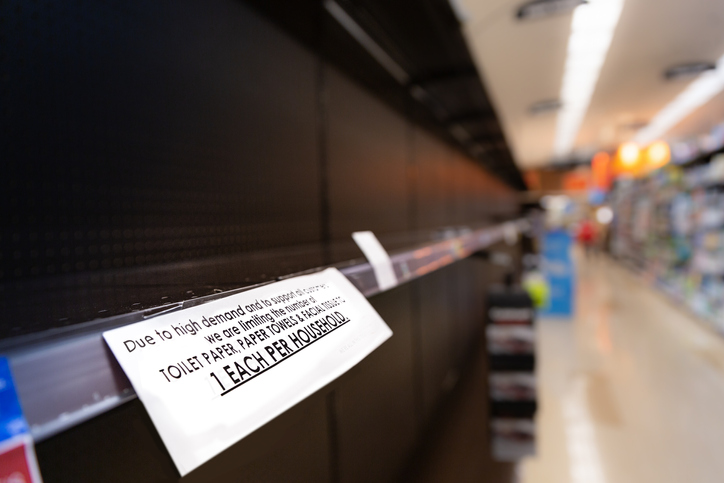Office Hours: Rebecca Hamilton Discusses Scarcity During Coronavirus

Widespread scarcity gripped millions of consumers across the world, with massive shortages of toilet paper and hand sanitizer during the early months of COVID-19. Rebecca Hamilton, professor of marketing at Georgetown University’s McDonough School of Business, explains the short and long-term reactions by consumers of this widespread scarcity and how it will continue to evolve and complicate the future.
What are some of the long-term effects of such widespread scarcity of essential products caused by COVID-19?
One long-term effect is the realization that we can live without the products we usually buy to solve our problems. Consumers who have encountered scarcity of their favorite brands, will now try other brands. Consumers who cannot go to the gym have started running or buying their own exercise equipment. Once-loyal Starbucks customers are now brewing their own coffee at home. These new brand loyalties and habits may last even after the scarcity has been resolved.
How has the amount of scarcity from the beginning of quarantine to present day changed over the course of the virus’s impact?
We have continued to observe significant scarcity, but the items that are scarce have shifted. First, there was scarcity of items such as hand sanitizer, disinfecting wipes, and toilet paper. Now, these items are becoming available, but it is difficult to find exercise equipment and sports gear because everyone has been buying gear to work out at home. Another shortage we have observed more recently is acetaminophen. This increased demand for pain relievers/fever reducers during the pandemic has disrupted global supply chains (much of the world’s supply is produced in China).
How has the response to scarcity by consumers changed over the course of the pandemic, and what caused that change?
Initially, there was a lot of panic-buying. Cleaning products and nonperishable foods and baking products flew off the shelves. There is less panic about obtaining essential items now that they are back in stock, and more recently, we have observed scarcity of less essential items (like home workout gear).
How have businesses creating essential products reacted to the widespread scarcity caused by COVID-19?
Manufacturers of some essential products have faced both higher demand and problems in the supply chain and labor force. Their focus has been on increasing production. Retailers have coped with scarcity in two ways:
- Raising prices (like third-party sellers on Amazon; Amazon is now facing a class action suit for price gouging)
- Limiting quantities of scarce items (like at Kohl’s and Target)
How will the erosion of brand and product loyalty during the scarcity of COVID-19 change marketing tactics used by these companies in the future to regain their consumer base?
Companies will have to work harder just to regain the customers they once had. It is much easier to keep customers than it is to gain new ones, and those customers who stopped buying during the crisis may be hard to lure back.
Do you believe this pattern of widespread scarcity will exist until the impact of the pandemic dies down, or will it exist far beyond then?
As mentioned, there is still scarcity, but it affects different items now versus in the initial stages of the pandemic. Changes in demand take time for businesses to adjust to, but eventually they will adapt. We may observe continuing disruptions in the supply chain and in the labor force for a while.
